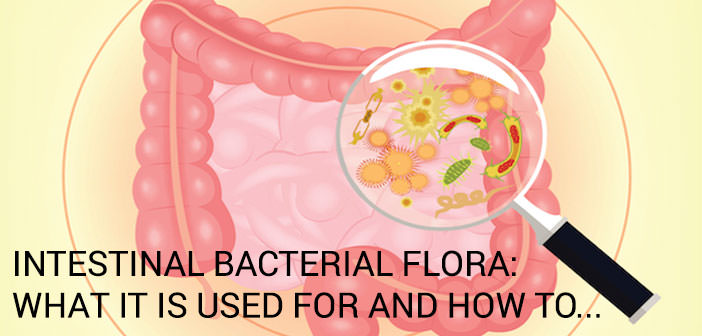Intestinal bacterial flora: What it is used for and how to restore it?
The intestinal bacterial flora is fundamental for the well-being of the digestive system and the whole organism. So let’s see what it is for and how to keep it beautiful.
Table of Contents
What is intestinal bacterial flora?
The intestinal bacterial flora is the set of germs that live inside the intestine. The digestive system has sterile content at birth, but soon it is populated with germs that come from outside, passing through the mouth and anus. Thus, the first months of life are fundamental to build a balanced and flourishing bacterial flora. It helps breast milk a lot because it promotes the proliferation of bifidobacteria, a strain particularly useful for human health.
Saprophytic, i.e., non-pathogenic bacterial strains that live in the intestine feed on the undigested substances present. A balance is established between the various strains of bacteria so that no one species can predominate over the other for the benefit of the intestine.
What intestinal flora is used for?
The intestinal bacterial flora constitutes a protective barrier that allows the organ to keep pathogenic microbes away. When the intestinal bacterial flora changes, protection is no longer guaranteed, and you are exposed to the risk of attacks by enemy bacteria.
The intestinal bacterial flora also performs other important functions: it promotes digestion and the correct absorption of food; produces some vitamins, especially vitamin B12 and vitamin K; helps prevent ailments such as diarrhea, constipation, and irritable bowel syndrome; intervenes in the metabolism of bilirubin and bile acids; produces some amino acids.
When the intestinal bacterial flora changes
When the intestinal bacterial flora changes, the whole organism is more exposed to pathologies of various natures and not only related to the digestive system.
The underlying causes of alteration of the intestinal bacterial flora can be different; the most common are:
- Antibiotic therapy, especially if prolonged
- Intestinal infections
- A little varied diet, lacking in dietary fiber and rich in refined foods
- A habit of eating meals in a hurry, chewing little
- Sedentary lifestyle
- Stress
Generally, when the alteration is caused by antibiotic therapy, the intestinal bacterial flora begins to repopulate when you stop taking this type of medication. On the other hand, when the intestinal bacterial flora is endangered by an intestinal infection or a toxic infection, the underlying infectious cause must be treated. Once healed, the intestinal bacterial flora will begin to repopulate progressively.
The other causes listed concern lifestyle and eating habits, which must be corrected.
How to restore intestinal bacterial flora
The intestinal bacterial flora spontaneously restores the moment the cause of its alteration disappears; it is necessary to follow a lifestyle and food to help the friendly bacteria repopulate the intestine in a balanced way. Here are some remedies to promote the correct restoration of the intestinal bacterial flora:
- Administration of probiotics, i.e., viable microorganisms that can help improve or preserve the existing bacterial flora. Just eat yogurt? No: yogurt is a good food to keep the bacterial flora healthy, but to correctly restore a ” damaged ” intestinal bacterial flora, often yogurt is not enough, and you need to resort to specific supplements.
- Follow a diet rich in prebiotics, substances that arrive undigested in the colon, fermented by the bacterial flora present, feeding it. Foods that contain prebiotics are, for example, oats, asparagus, leeks, chicory, and artichokes.
- Follow a healthy and balanced diet, rich in fiber and low in too refined foods.
- Do sports or otherwise have an active lifestyle.
- Avoid sources of stress as far as possible.

